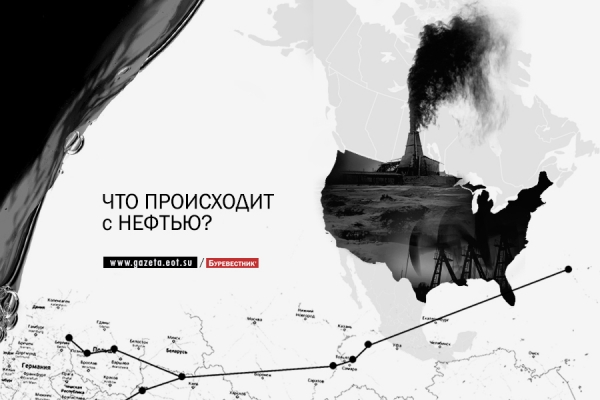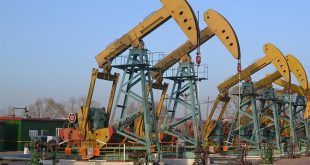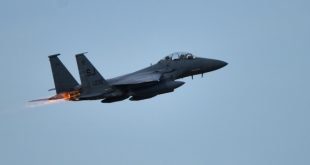The rebound of oil over $40 a barrel is substantiated by the expectations of the arrangements between the world’s largest oil-producing countries of the world. Agreements that must “approve” of the USA, without which attempts to regulate the prices depreciate, not to mention the fate of the price of the “slate wars”. Americans have repeatedly stressed their commitment to “market principles of pricing” (i.e. refused to agree).

Shale oil and gas is superfactor. If the U.S. even today and in the foreseeable future will be able to “feed” (even overpayment) themselves based on shale oil and gas, it unleashes their hands for a radically new policy towards the greater Middle East, and hence the world at large
Next, lay out a complete version of our article “What happens to the oil?”, published in the newspaper “the Essence of time”.
“What happens to the oil?”
Now it is well known that the Russian economy critically depends on oil and gas exports. But in this Duo of oil and gas essential oil.
So, by the end of 2015 oil export from Russia in physical terms amounted to 244.5 million tons of oil (an increase of 9% compared to 2014), in value terms, $89,6 billion (a decrease of 41.8 percent). Export of oil products in physical terms amounted to $ 171,5 million tons of oil products (growth by 4%), in terms of $67,4 billion (a decrease of 41.7 per cent). Gas exports in 2015, in physical terms amounted to 185,5 billion cubic meters (an increase of 7.5%), in value terms, $41,8 billion (decrease na23%).
Thus, oil exports from Russia in 2015 was $198,8 billion, of which 73,4% falls on export of oil and oil products ($157 billion) and 26.6% of the total export of gas ($41,8 mlrd). In addition, pricing in long term gas supply contracts (by Russia) are linked to oil prices and reacts to them with a lag of approximately 6-9 months. That is, our natural gas exports today is focused on oil prices 6-9 months old (when Brent crude was trading around $55 per barrel).
The value of total exports from Russia in 2015 was $340,3 billion (a reduction of 31.6%). Thus, the share of oil and oil products exports from Russia stood at 46.1%, the gas share of 12.3%, the share of oil and gas exports in General is 58.4%. That is, the exports of the oil industry brings almost four times more export revenue than the export of the gas industry, and this is nearly half of total export earnings of the country. And because today is the factor of oil prices is crucial for the stability of the Russian economy.
But oil obviously is something wrong.
The fact that the sharp drop in oil prices led not to decline, but, on the contrary, to its increase and even additional manufacturers dumping, in its own right. Oil companies and those countries for whose economy the export of oil is critical, trying to compensate the losses from falling prices by increasing the volume of sales, which leads to increasing production and dumping war. The drop of investments in development of new deposits has not yet affected the oil market.
The market is not yet reacting to the news about the underfunding of future oil production for hundreds and hundreds of billions of dollars (I’m sure not far off the day when the assessments will be heard the word “trillion”) and, as a result, a record fall in the number of active drilling rigs. For example, 19 February 2016, the Financial Times reported that the number of working drilling rigs in the U.S. fell to its lowest level since 2009. On the same day the price of Brent crude oil dropped 0.42% to $33,12 / bbl. But the current global market expectations, reflecting in the prices of future events long before they happen.
A similar reaction could be explained by the expectation of falling global oil demand. But the International energy Agency and other leading expert centers, predicts growth in oil demand, both in the short and in the long term.
That is, the oil market gets news that oil production is more and more not sufficiently financed, the demand for oil will continue to grow and… holding steady falling trend of oil prices.
Maybe the fact that players on the oil market are counting on new supplies, binding special hopes with Iran?
The removal of the “nuclear” sanctions against Iran partially opens the range of markets for Iranian oil. But that’s partly because dollar transactions with Iran still pose a problem due to other, remaining in force, sanctions restrictions imposed by the United States. But the main thing is the volume.
Prior to the lifting of sanctions, Iran has exported 1 million barrels a day (about 49 million tons per year). The lifting of sanctions after Iran announced his intention for 2016 is to double your exports, bringing it to 2 million barrels in fact. 14 February 2016 Deputy oil Minister of Iran, Rokneddin Javadi said that Iran has already increased its exports by 400 thousand barrels. I recall that in 162 the issue of “Essence of time” Yu White led the evaluation of the “grey” (bypassing sanctions) of oil exports from Iran to 300-400 thousand barrels. That is, in this case we can talk about legalizing those volumes of oil from Iran, which were previously on the market, formally with other countries of origin.
As for the remaining 600 barrels that Iran will increase its export in 2016, they account for 0.6% of world oil production (to 96.3 million barrels of oil per day in 2015). For comparison, Libya in 2011 exported 1.6 million barrels per day. As a result of civil war and foreign military intervention exports from Libya collapsed. But this did not lead to shocks in the oil market. The level of production achieved under Gaddafi, Libya has not returned to this day. Out of 800 thousand barrels in September 2014, oil production in Libya has again fallen to 180 thousand barrels in the beginning of 2015, and then partially recovered up to 400 thousand barrels per day. Moreover, as a result of permanent war going on in Libya, systematically threatened complete cessation of oil exports from that country. However, the loss of exports from Libya did not prevent oil prices swoop down over 2014 and 2015. But now prices are falling particularly hard on news from Iran, like “in Europe, arrived first tanker of Iranian oil.”
News from Iran and in General news, directly concerning the oil market, are themselves a separate story. For example, oil prices won back news about the forthcoming lifting of the sanctions on Iran in the summer of 2015, in reaction to her fall. And then, when in January 2016, the sanctions were formally lifted, the prices again fell as though this news has not yet responded to earlier.
Even the abolition of existing since 1973 embargo on oil exports from USA, which indeed is psychologically powerful news, can set the trend on the world market for physical oil, as the US remains a large net oil importers (oil importing much more than exporting). In the reports of dumping oil trading IG estimates from 34 thousand to 200 thousand barrels of oil per day, which in any case is for the global market value on a statistical error. And so on. The same applies to the reports that stocks in some oil storage has grown in so many barrels.
It seems that the market for a further decline down need only formal reasons, “legitimizing” a decreasing trend. Many experts explain this trend by the desire of Saudi Arabia (or the Gulf in General) end unfolded in the U.S. “shale revolution”. The shale oil and gas is indeed unprofitable at current oil prices and the shale industry in the United States there is a growing wave of bankruptcies. But bankruptcy is a legal question, not a destruction of existing technologies, equipment and fields.
Incomprehensible logic of a price war with the “slate”. If the plan is to bankrupt the industry, and then return the prices up, what will prevent the shale industry in the United States to recover under the flags of new companies? Because the field is not going anywhere, and technology is not going anywhere, and even equipment will remain. Frames partially lost, but they will restore, the only question is the timing.
So what is the logic? To keep prices prohibitively low for slate? Nobody, by the way, have you thought about what would happen if the oil shale industry adapts to these prices? Or the plan is “the swing”: brought down prices — shale industry lies on its side, raised the price — shale industry blossomed?
Shale oil and gas is superfactor. If the U.S. even today and in the foreseeable future will be able to “feed” (even overpayment) themselves based on shale oil and gas, it unleashes their hands for a radically new policy towards the greater Middle East, and hence the whole world.
But what, if not a fundamentally new relation to oil (and, hence, to key oil and gas region — the greater Middle East), can explain the calm with which the world, including the United States, looks at the war in Yemen, which is mired in Saudi Arabia and which occasionally “goes” adjacent to the territory of Yemen Saudi Arabia itself? Why doesn’t impact the prices ensuing “cold war” between Saudi Arabia and Iran, accompanied by rising tensions in populated predominantly Shia Bahrain (which is de facto occupied by Saudi Arabia) and key oil region of Saudi Arabia — Eastern province?
Before any of these processes would be enough to spike oil prices up. But today for the world market for some reason are more important news as “the first oil tanker from the U.S. arrived in France”.
If American policy promotes the burning of oil “sacred cows” in the Persian Gulf region means that the cow is no longer sacred, and begin to cut.
Then, perhaps, we are at the stage of formation of new architecture of world oil and gas market. The United States, controlling financial speculation (having a decisive influence on pricing in the oil market), get (or think you get) and the potential for Autonomous self-sufficiency in oil and gas. And thus lose their vital interest in the stability of the key world suppliers of oil.







